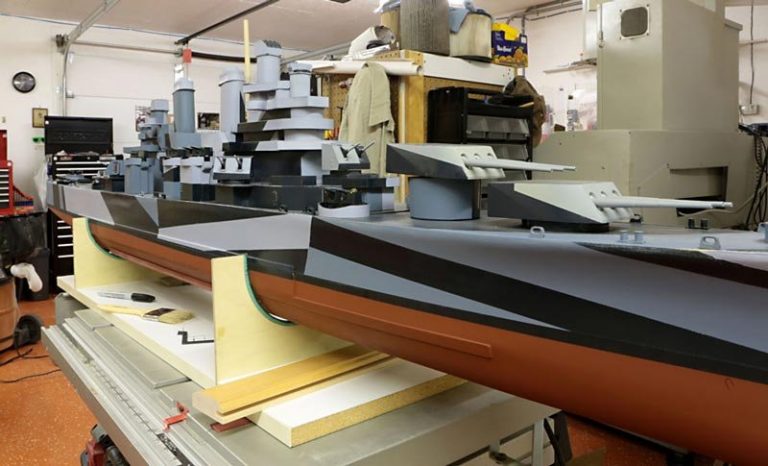Paul Szudzik is a former IBM programmer who builds 1/96 scale model ships, frequents a camera club, and creates art out of metal and wood. To support his varying hobbies, Paul enlists the help of a Tormach PCNC 1100 CNC mill throughout his varying hobbies.
“I got involved with the Tormach because of my hobbies, but the first machine I bought wasn’t a Tormach,” Paul says. “I had originally purchased a Shoptask 1220 Gold model. That failed terribly. I thought for sure that a lower-cost machine would solve my problems and it didn’t. I should’ve just got a Tormach right from the beginning.”
Paul bought his PCNC 1100 specifically for aluminum work on his model ships. "A lot of the ships that I do require very rigid but fine detail,” he explains.
Since purchasing the machine, he’s moved from part production to mold production. “I’ve evolved most of my model work into wax molds. I’ll make the wax part, then make a rubber mold, and then cast the parts that I want out of resin. I primarily use the Tormach to make the master mold for the parts on the ships.”
He boasts about the amount of time the PCNC 1100 saves, “Today I made four parts. It took me maybe a half-an-hour on the Tormach and 15 minutes of cleanup, and I was done.”
The challenge with ship modeling is that a model is judged on its accuracy, so even though speed is convenient, precise parts are required for success.
“When you do a model, you’re judged on how accurate it is to the real thing, and it’s very easy to see errors. Manually trying to do all of this stuff would be hell, but it’s easy with the Tormach.”
Beyond shipbuilding, Paul is part of a camera club that uses an array of camera brands and models. More often than not, varying model numbers (let alone brands) don’t fit on the same mount, so Paul designed his own. Using the PCNC 1100, he creates customized mounts that fit onto the same base, allowing easy mount switching and further customization. He also uses his PCNC 1100 to create art, which has been displayed at the Oregon state capitol.
“The art was something I didn’t expect to use the Tormach for, and now I think I use it more for that than anything else,” he explains. “I wouldn’t have been able to do that without the Tormach. I have yet to run out of ideas on how to use this machine.”
Paul originally bought his Tormach PCNC 1100 mill used, but boasts of the quality that it still provides. “I’m the third owner of it, and I haven’t seen any degradation,” Paul says. After a couple of minor upgrades, including a new digital vector spindle drive, he finds little trouble with an aging machine.
“One of the things I love about the Tormach is the quality. I just love the way the TTS (Tormach’s quick change tool holder system) quickly changes out. I only have one quick setup here and it works great. I’m very happy with the quality. I’d love to get one more, but my wife won’t let me have another.”
According to Paul, the Tormach machine in his shop is running for at least three or four hours daily, churning out new molds or components for projects. From developing ship models to customized camera mounts, he is an enthusiast that thrives with his Tormach machine.
“Every time I go out into the shop, I look at the Tormach and go ‘ok, what can I do with it?’ I have three main hobbies, the ship building, the camera club, and my art, and really, the Tormach is a focus point for all three.”


